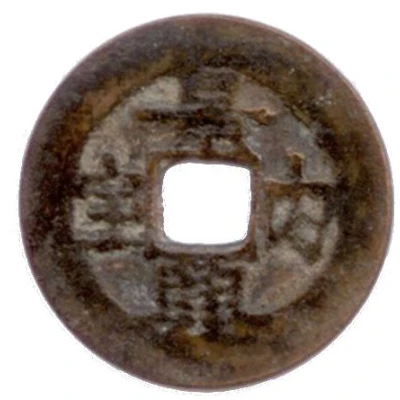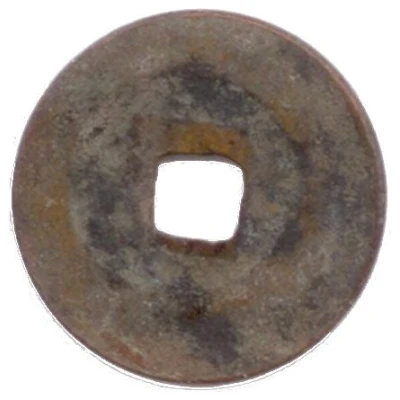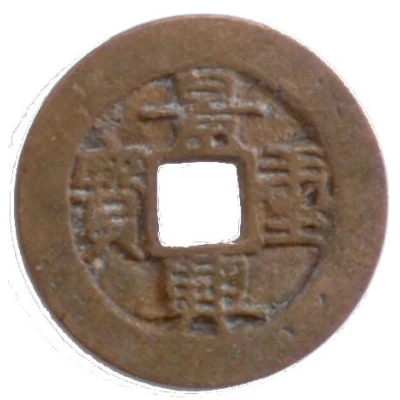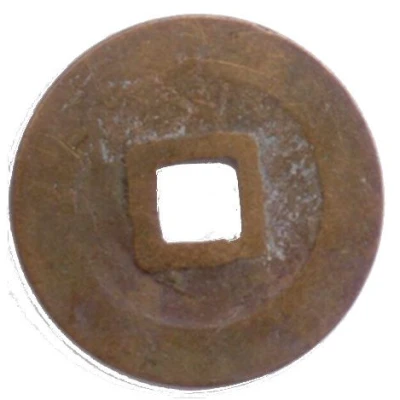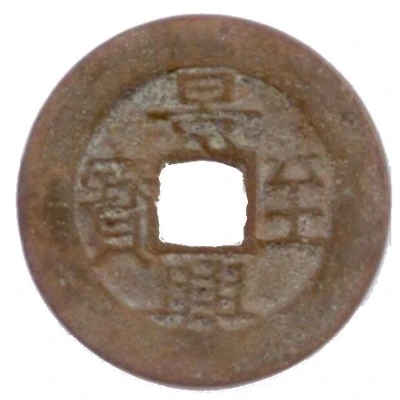
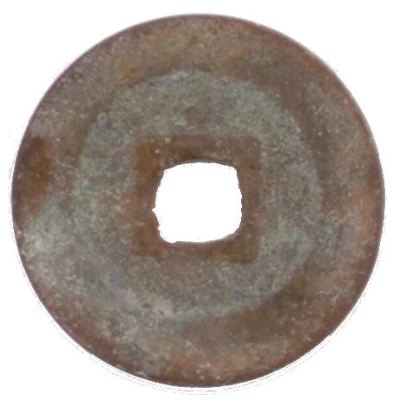

© be.hanoi
1 Cash - Cảnh Hưng Chí Bảo ND
| Copper | 3.20 g | 24 mm |
| Issuer | Empire of Vietnam |
|---|---|
| Emperor | Lê Hiển Tông (1740-1786) |
| Type | Standard circulation coin |
| Years | 1740-1776 |
| Value | 1 Cash |
| Currency | Cash (970-1868) |
| Composition | Copper |
| Weight | 3.20 g |
| Diameter | 24 mm |
| Shape | Round with a square hole |
| Technique | Cast |
| Orientation | Medal alignment ↑↑ |
| Demonetized | Yes |
| Updated | 2024-10-09 |
| Numista | N#99295 |
|---|---|
| Rarity index | 92% |
Reverse
Blank (uniface).
Edge
Plain
Interesting fact
The 1 Cash coin from the Empire of Vietnam, which was minted during the reign of Emperor Cảnh Hưng (Chí Bảo) from 1740 to 1776, features a unique design that reflects the cultural and historical significance of the time. The obverse side of the coin bears the inscription "Chí Bảo" in Han characters, which means " Auspicious Treasure" or "Good Omen", indicating the Emperor's belief in the importance of good fortune and prosperity for his kingdom. The reverse side of the coin features a stylized dragon, which symbolizes power, strength, and good luck in Vietnamese culture. The dragon is depicted with five claws, which represents the five virtues of Confucianism: benevolence, righteousness, propriety, wisdom, and sincerity. These virtues were highly valued in Vietnamese society during that time period. It's worth noting that the coin is made of copper, which was a common material used for coinage in many ancient civilizations, including Vietnam. The use of copper for coins was not only practical but also symbolic, as it represented the connection between the earthly realm and the divine. In addition, the weight of the coin, which is 3.20 grams, is also significant, as it reflects the careful attention to detail and precision that was required in the minting process. Overall, the 1 Cash coin from the Empire of Vietnam is a fascinating piece of history that offers a glimpse into the cultural, social, and economic aspects of life in ancient Vietnam.
